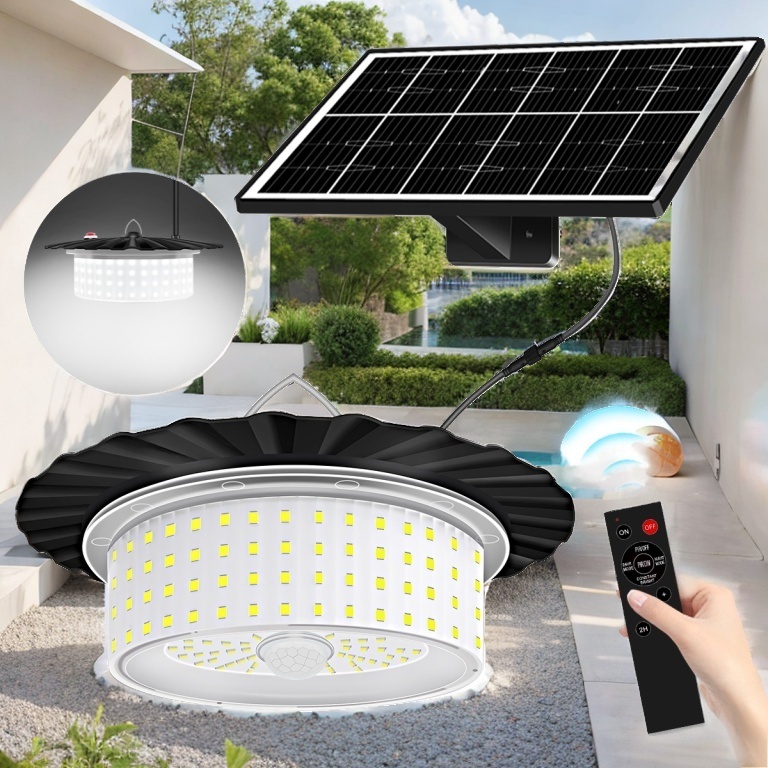The following are their core application areas:
![]() Residential and Private Courtyards
Residential and Private Courtyards
![]() Family Gardens/Yards: Provide basic lighting while decorating the yard, commonly seen in villas, courtyards or balconies.
Family Gardens/Yards: Provide basic lighting while decorating the yard, commonly seen in villas, courtyards or balconies.
![]() Entrance Paths: Installed beside walkways and steps to ensure safe walking at night and add a warm atmosphere.
Entrance Paths: Installed beside walkways and steps to ensure safe walking at night and add a warm atmosphere.
![]() Terraces/Poolsides: Create a relaxing atmosphere while serving functional lighting purposes.
Terraces/Poolsides: Create a relaxing atmosphere while serving functional lighting purposes.
![]() Public and Commercial Spaces
Public and Commercial Spaces
![]() Communities/Parks: Used in green belts, walkways or squares, reducing municipal electricity bills and enhancing the beauty of public areas.
Communities/Parks: Used in green belts, walkways or squares, reducing municipal electricity bills and enhancing the beauty of public areas.
![]() Hotels/B&Bs/Resorts: Decorate outdoor landscapes, lowering operational costs, such as mood lighting around gardens, lawns or pools.
Hotels/B&Bs/Resorts: Decorate outdoor landscapes, lowering operational costs, such as mood lighting around gardens, lawns or pools.
![]() Rural/Remote Areas: Address insufficient grid coverage issues, suitable for village roads, squares and other lighting needs.
Rural/Remote Areas: Address insufficient grid coverage issues, suitable for village roads, squares and other lighting needs.
![]() Municipal and Landscape Projects
Municipal and Landscape Projects
![]() City Streets/Squares: Serve as supplementary lighting, reducing energy consumption when combined with traditional street lamps (configuration based on brightness requirements).
City Streets/Squares: Serve as supplementary lighting, reducing energy consumption when combined with traditional street lamps (configuration based on brightness requirements).
![]() Tourist Attractions/Ecological Parks: Protect the original appearance of natural landscapes, no need for wiring to avoid environmental damage, suitable for boardwalks, viewing platforms, etc.
Tourist Attractions/Ecological Parks: Protect the original appearance of natural landscapes, no need for wiring to avoid environmental damage, suitable for boardwalks, viewing platforms, etc.
![]() Historical and Cultural Districts: Installed discreetly without damaging ancient buildings, providing soft lighting.
Historical and Cultural Districts: Installed discreetly without damaging ancient buildings, providing soft lighting.
![]() Special Needs Scenarios
Special Needs Scenarios
![]() Temporary Events/Festival Decorations: Quick setup without power supply, suitable for markets, weddings, festival lighting, etc.
Temporary Events/Festival Decorations: Quick setup without power supply, suitable for markets, weddings, festival lighting, etc.
Camping Sites/Farms: Meet basic outdoor lighting needs, easy to install and move.
![]() Flood Control/Disaster Areas: Serve as temporary light sources during disasters, providing reliable lighting.
Flood Control/Disaster Areas: Serve as temporary light sources during disasters, providing reliable lighting.
![]() Core advantages:
Core advantages:
Zero electricity bill, low-carbon and environmentally friendly: Powered by solar energy, it reduces carbon emissions.
![]() Flexible installation: No complex wiring is required, suitable for complex terrains or protected areas.
Flexible installation: No complex wiring is required, suitable for complex terrains or protected areas.
![]() Intelligent control: Most products support light control + human body sensing, which is energy-saving and enhances the experience. Notes to Observe
Intelligent control: Most products support light control + human body sensing, which is energy-saving and enhances the experience. Notes to Observe
![]() Lighting conditions: It is necessary to ensure 4 to 6 hours of sunlight exposure daily. Continuous rainy days may affect the battery life (selecting a large-capacity battery can alleviate this issue).
Lighting conditions: It is necessary to ensure 4 to 6 hours of sunlight exposure daily. Continuous rainy days may affect the battery life (selecting a large-capacity battery can alleviate this issue).
![]() Scene adaptation: For areas with high brightness requirements (such as main roads), it is necessary to confirm whether the lamp power meets the standards, or use it in combination with traditional lighting.
Scene adaptation: For areas with high brightness requirements (such as main roads), it is necessary to confirm whether the lamp power meets the standards, or use it in combination with traditional lighting.

